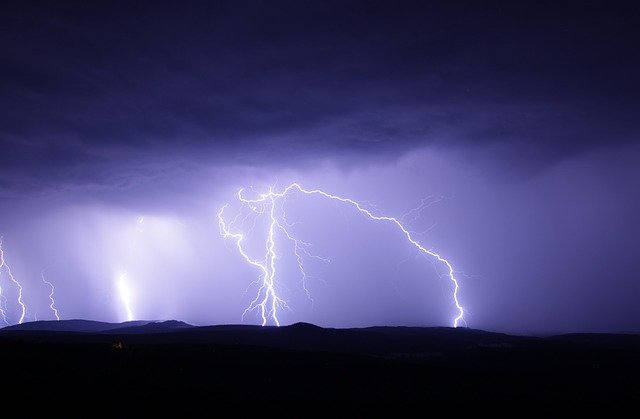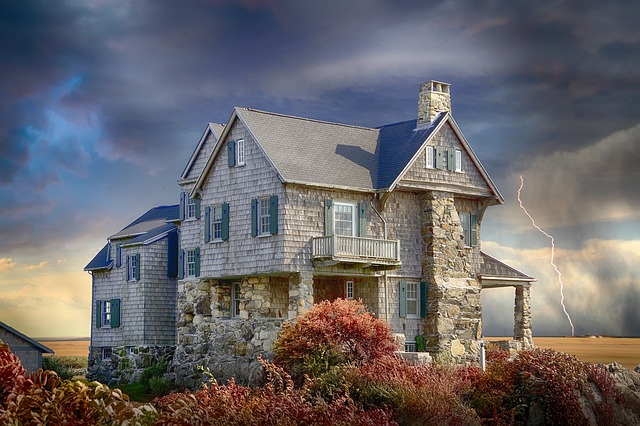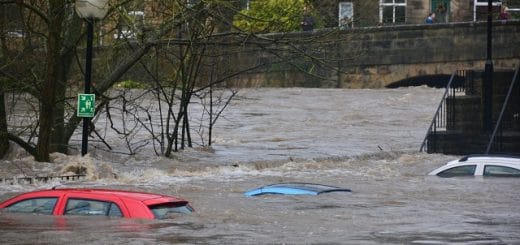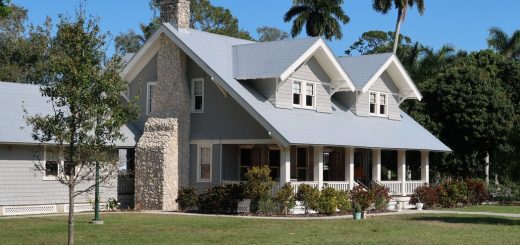Common Summer Storms and How to Protect Your Home
As we get closer to the summer, we only plan for the positive, like vacationing, moving, grilling, and tanning. Most people never plan for or expect a disaster to occur during such an amazing time. Yet, summer storms can cause millions of dollars in property damage that leaves homes with broken windows, flooded basements, leaking roofs, and damaged siding that can result in further issues.
As you can imagine, the spring and summer months are known for their disastrous storms. As much as you want to plan your next vacation, you should also prepare for any disasters that may occur to your home. Taking extra steps of caution now can prevent significant damage in the future, allowing you to spend more money on your trip.
The key to preventing storm damage to your home is to know and understand the common types of storms.
-

Thunderstorms are the most common summer storms as they occur in nearly every state
Thunderstorms
These are most common summer storms as they occur in nearly every state, causing over $15 billion in property damage each year. Chimneys, trees, and telephone poles are vulnerable to being hit by lightning and falling over onto your home. The wind can blow around debris, sending rocks, broken glass, and even large objects through your windows. Siding can also be ripped off with powerful winds.
- Hailstorms
Especially during the spring, hailstorms are known to commonly damage roofing, both on cars and homes. They can also break windows, damage siding, clog gutters, and damage exterior furniture.
- Hurricanes, Typhoons and Tropical Storms
Those who live in the southern and eastern coastal states face a much higher risk of storm damage being so close to the Atlantic Ocean and in warmer areas. With climate change, tropical cyclones are growing stronger as sea surface temperatures rise.
How to Protect Your Home from Storm Damage
While there’s no way to prevent storm damage to your home, just as it’s impossible to control Mother Nature, there are steps you can take to limit potential damage to your home during storm season and keep you and your family safe. Check out these tips below.
- Clean your gutters. Gutters and downspouts are designed to allow the water from your roof to flow away from your home. But if they become filled with soggy leaves and dirt, they can become blocked as water falls over and pools into your foundation. Be sure to clean your gutters and downspouts often to prevent the risk of floodingFlooding is the overflow or accumulation of water in areas t... More.
- Inspect your foundation. Look closely for any gaps or cracks in your home’s foundation as rainwater will find its way in and cause major damage to your interior structureStructure refers to the framework or components of a buildin... More. Also don’t forget to inspect your windows and doors for seepageSeepage is the slow movement of water or other fluids throug... More.
- Check your yard for dead or sick trees. If the tree is hollowed, dead, or diseased, it’s not strong enough to stand on its own and may fall on your home, especially during a storm. Thankfully, homeowner’s insuranceHomeowner’s insurance is a policy that provides financial ... More does cover fallen trees, but it would be best to prevent this situation by having them removed by a professional.
-

Proper roof inspectionInspection is the careful examination and assessment of a pr... More and maintenanceMaintenance is the routine care, inspection, and repair of a... More is critical to preventing leaks in your home
Secure outdoor furniture. With strong winds, furniture can be blown around and damage your home. You also might lose them if they’re not secured or put away before a storm.
- Have your roof inspected each year. Proper roof inspectionInspection is the careful examination and assessment of a pr... More and maintenanceMaintenance is the routine care, inspection, and repair of a... More is critical to preventing leaks in your home. Finding any damage or cracks right away can save a big headache in the future, especially during a big storm.
- Check your landscaping. Your home’s foundation should sit on a slight slope to allow water to flow away from your home. Your sump pumpA sump pump is a pump installed in a basement or crawlspace ... More is important for pushing water out but it can quickly overflow if water is constantly pooling in your basement.
- Shut off your utilities. In extreme conditions like hurricanes and hailstorms, you may need to turn off your utilities to prevent any electrical damage if lightning or wind destroys any power lines.
- Unplug electronics. If lightning strikes the main power line leading to your home, it can fry your TV and any other electronics you have plugged in.
- Close your window shutters. Secure all window shutters and doors as well as blinds and curtains to prevent debris from damaging the interior of your home.
- Identify safe rooms in the home. Pick an interior room in your home with no windows. If there’s a tornado, the safest place to be is in your basement or the lowest level in your home.
- Keep a disaster kit. Including items such as canned food, a flashlight, battery-powered radio, and first-aid kit in your disaster kit are essential and can provide temporary relief during an emergency.
- Watch the weather. Stay updated on the local weather by listening to the radio, watching TV, or finding weather alerts on your phone. Remember that a severe thunderstorm watch means a storm can happen. A severe thunderstorm warning means a severe storm is in your area and you should take shelter right away.
- Secure heavy furniture. Large, heavy furniture like bookshelves, china cabinets, and other tall items should be secured or anchored to the wall so they don’t fall. Also, move any other furniture away from the doors and windows.
Storm and Water Damage RestorationWater damage restoration is the professional process of clea... More Services
Again, it’s impossible to fully prevent damage to your home from a storm or flood. If you do find any issues, such as from floodwater or moldMold is a type of fungus that grows in damp or humid conditi... More, don’t hesitate to contact a water damage restoration professional.
Qualified contractors are licensed, trained, and experienced to respond right away to dry out all areas and repairRepair is the act of fixing or restoring damaged property, m... More building materials affected by water damage. They will also remove any moldMold is a type of fungus that grows in damp or humid conditi... More growth that may have developed over time with mold remediationMold remediation is the process of identifying, removing, an... More services.
Following the service, they will work with your insurance agent during the claims process, if you chose to file a claim, for additional peace of mind.
Just as it’s important to prepare for a storm during the summer, it’s also important to react right away as soon as you discover any kind of damage to prevent it from becoming worse over time.












